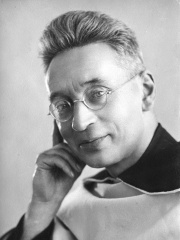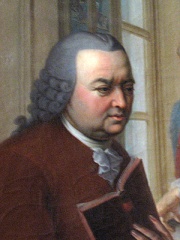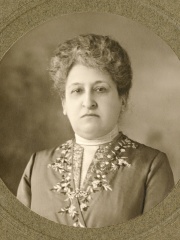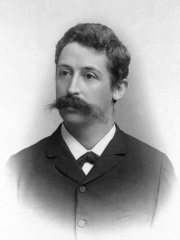
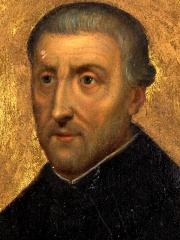
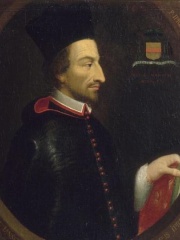
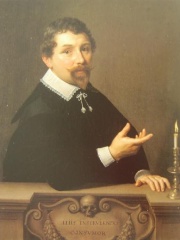
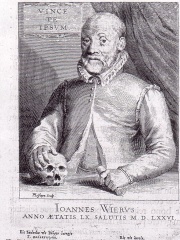
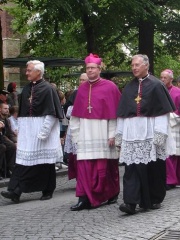
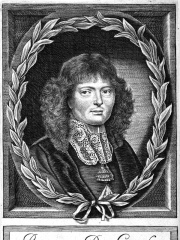
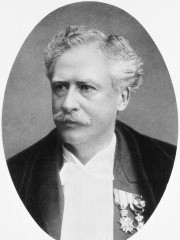
The Most Famous
PHYSICIANS from Netherlands
This page contains a list of the greatest Dutch Physicians. The pantheon dataset contains 726 Physicians, 18 of which were born in Netherlands. This makes Netherlands the birth place of the 9th most number of Physicians behind Türkiye, and Switzerland.
Top 10
The following people are considered by Pantheon to be the top 10 most legendary Dutch Physicians of all time. This list of famous Dutch Physicians is sorted by HPI (Historical Popularity Index), a metric that aggregates information on a biography's online popularity. Visit the rankings page to view the entire list of Dutch Physicians.

1. Christiaan Eijkman (1858 - 1930)
With an HPI of 76.20, Christiaan Eijkman is the most famous Dutch Physician. His biography has been translated into 66 different languages on wikipedia.
Christiaan Eijkman (UK: AYK-mən, EYEK-mən, US: -mahn, Dutch: [ˈkrɪstijaːn ˈɛikmɑn]; 11 August 1858 – 5 November 1930) was a Dutch physician and professor of physiology whose demonstration that beriberi is caused by poor diet led to the discovery of antineuritic vitamins (thiamine). Together with Sir Frederick Hopkins, he received the Nobel Prize for Physiology or Medicine in 1929 for the discovery of vitamins.

2. Peter Canisius (1521 - 1597)
With an HPI of 71.87, Peter Canisius is the 2nd most famous Dutch Physician. His biography has been translated into 36 different languages.
Peter Canisius (Dutch: Pieter Kanis; 8 May 1521 – 21 December 1597) was a Dutch Jesuit priest known for his strong support for the Catholic faith during the Protestant Reformation in Germany, Austria, Bohemia, Moravia, Switzerland and the British Isles. The restoration of the Catholic Church in Germany is largely attributed to the work there of the Jesuits, which Canisius led. He is venerated in the Catholic Church as a saint and as a Doctor of the Church.

3. Cornelius Jansen (1585 - 1638)
With an HPI of 71.13, Cornelius Jansen is the 3rd most famous Dutch Physician. His biography has been translated into 34 different languages.
Cornelius Jansen (; Dutch: [ˈjɑnsə(n)]; Latinized name Cornelius Jansenius; also Corneille Jansen; 28 October 1585 – 6 May 1638) was the Dutch Catholic bishop of Ypres in Flanders and the father of a theological movement known as Jansenism.

4. Nicolaes Tulp (1593 - 1674)
With an HPI of 67.00, Nicolaes Tulp is the 4th most famous Dutch Physician. His biography has been translated into 24 different languages.
Nicolaes Tulp (9 October 1593 – 12 September 1674) was a Dutch physician and mayor of Amsterdam. Tulp was well known for his upstanding moral character and as the subject of Rembrandt's famous painting The Anatomy Lesson of Dr. Nicolaes Tulp.
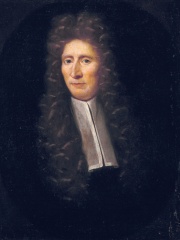
5. Frederik Ruysch (1638 - 1731)
With an HPI of 65.48, Frederik Ruysch is the 5th most famous Dutch Physician. His biography has been translated into 22 different languages.
Frederik Ruysch (Dutch: [ˈfreːdərɪk ˈrœys]; March 28, 1638 – February 22, 1731) was a Dutch botanist and anatomist. He is known for developing techniques for preserving anatomical specimens, which he used to create dioramas or scenes incorporating human parts. His anatomical preparations included over 2,000 anatomical, pathological, zoological, and botanical specimens, which were preserved by either drying or embalming. Ruysch is also known for his proof of valves in the lymphatic system, the vomeronasal organ in snakes, and arteria centralis oculi (the central artery of the eye). He was the first to describe the disease that is today known as Hirschsprung's disease, as well as several pathological conditions, including intracranial teratoma, enchondromatosis, and Majewski syndrome.

6. Johann Weyer (1515 - 1588)
With an HPI of 64.97, Johann Weyer is the 6th most famous Dutch Physician. His biography has been translated into 22 different languages.
Johannes Wier (Latin: Ioannes Wierus or Piscinarius; 1515 – 24 February 1588) was a Dutch physician who was among the first to publish a thorough treatise against the trials and persecution of people accused of witchcraft. His most influential work is De Praestigiis Daemonum et Incantationibus ac Venificiis ('On the Illusions of the Demons and on Spells and Poisons'; 1563).

7. Wim Eijk (b. 1953)
With an HPI of 64.63, Wim Eijk is the 7th most famous Dutch Physician. His biography has been translated into 30 different languages.
Willem Jacobus "Wim" Eijk (born 22 June 1953) is a Dutch prelate of the Catholic Church, a cardinal since 2012. He has been the Metropolitan Archbishop of Utrecht since 2007. He was Bishop of Groningen-Leeuwarden from 1999 to 2007. Before his clerical career he worked as a medical doctor; as a priest he made medical ethics the focus of his academic studies. He has done his doctoral studies in medicine and philosophy, and also holds a licentiate in theology.

8. Regnier de Graaf (1641 - 1673)
With an HPI of 63.89, Regnier de Graaf is the 8th most famous Dutch Physician. His biography has been translated into 24 different languages.
Regnier de Graaf (English spelling), original Dutch spelling Reinier de Graaf, or Latinized Reijnerus de Graeff (30 July 1641 – 17 August 1673), was a Dutch physician, physiologist and anatomist who made key discoveries in reproductive biology. He specialized in iatrochemistry and iatrogenesis, and was the first to develop a syringe to inject dye into human reproductive organs so that he could understand their structure and function.

9. Herman Snellen (1834 - 1908)
With an HPI of 63.51, Herman Snellen is the 9th most famous Dutch Physician. His biography has been translated into 21 different languages.
Herman Snellen (Dutch pronunciation: [ˈɦɛrmɑn ˈsnɛlə(n)], February 19, 1834 – January 18, 1908) was a Dutch ophthalmologist who in 1862 introduced the Snellen chart to study visual acuity. He took over directorship of the Netherlands Hospital for Eye Patients (Nederlandsch Gasthuis voor Ooglijders), after Franciscus Donders. He was elected an International Member of the American Philosophical Society in 1894.
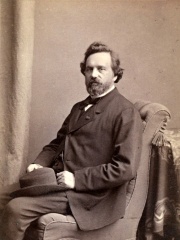
10. Franciscus Donders (1818 - 1889)
With an HPI of 62.98, Franciscus Donders is the 10th most famous Dutch Physician. His biography has been translated into 24 different languages.
Franciscus (Franz) Cornelius Donders FRS FRSE (27 May 1818 – 24 March 1889) was a Dutch ophthalmologist. During his career, he was a professor of physiology in Utrecht, and was internationally regarded as an authority on eye diseases, directing the Netherlands Hospital for Eye Patients. Along with Graefe and Helmholtz, he was one of the primary founders of scientific ophthalmology.
People
Pantheon has 18 people classified as Dutch physicians born between 1515 and 1954. Of these 18, 1 (5.56%) of them are still alive today. The most famous living Dutch physicians include Wim Eijk. The most famous deceased Dutch physicians include Christiaan Eijkman, Peter Canisius, and Cornelius Jansen.
Living Dutch Physicians
Go to all RankingsDeceased Dutch Physicians
Go to all RankingsChristiaan Eijkman
1858 - 1930
HPI: 76.20
Peter Canisius
1521 - 1597
HPI: 71.87
Cornelius Jansen
1585 - 1638
HPI: 71.13
Nicolaes Tulp
1593 - 1674
HPI: 67.00
Frederik Ruysch
1638 - 1731
HPI: 65.48
Johann Weyer
1515 - 1588
HPI: 64.97
Regnier de Graaf
1641 - 1673
HPI: 63.89
Herman Snellen
1834 - 1908
HPI: 63.51
Franciscus Donders
1818 - 1889
HPI: 62.98
Titus Brandsma
1881 - 1942
HPI: 62.73
Gerard van Swieten
1700 - 1772
HPI: 62.66
Aletta Jacobs
1854 - 1929
HPI: 62.55
Overlapping Lives
Which Physicians were alive at the same time? This visualization shows the lifespans of the 10 most globally memorable Physicians since 1700.

